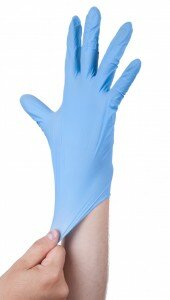 Antibiotic-resistant pathogens such as E. coli and methicillin-resistant Staphylococcus aureus (MRSA) have created a need for new antibacterial approaches. Research featuring one such antibacterial innovation using clay, a material used for its medicinal properties since ancient times, was reported in PLOS ONE (the journal of the Public Library of Science).
Antibiotic-resistant pathogens such as E. coli and methicillin-resistant Staphylococcus aureus (MRSA) have created a need for new antibacterial approaches. Research featuring one such antibacterial innovation using clay, a material used for its medicinal properties since ancient times, was reported in PLOS ONE (the journal of the Public Library of Science).
In this case, the innovation involves the antibacterial mechanism: specific metal ions attached to the clay. Rather than taking advantage of clay’s absorption power, this study found that the effective antibacterial mechanism is the release of specific metal ions with microbiocidal properties from the clay’s surface.
Comparisons of the antibacterial effect on pathogens of similar clay samples with different levels of iron, copper, cobalt, nickel, and zinc ions demonstrate the dominant role of those ions. Variability of antibacterial strength in clay samples correlates with the clay’s chemical variability.
Now that the mechanism has been demonstrated, further research will look to standardize the composition and antibacterial efficacy of clay, and define appropriate safety precautions to avoid effects of toxic minerals that are often also present in clays. If this works out, it could lead to another point for ancient wisdom’s applicability to modern research innovations.
PurThreadTM Technologies Inc. is dedicated to developing proprietary antimicrobial textile technology. Our patent-pending, integration technology and fiber formulations incorporate an EPA-registered antimicrobial additive into every fiber and yarn to protect the fabric from degradation. Learn more about our antimicrobial textile technology.
PurThread also makes a range of freshness products for other markets such as the military, emergency first responders and performance athletic wear in which our next-generation technology and fiber formulations expand the high performance options available to protect fabrics from odor, mold and mildew causing bacteria.
 Hand hygiene (HH) compliance is widely recognized as an essential factor in preventing healthcare-acquired infections (HAIs). However, hand hygiene compliance is inconsistent at best. Estimates of overall HH compliance in the U.S. range from 26% to over 75%. In other words, no one knows for sure what is the real hand hygiene compliance rate .
Hand hygiene (HH) compliance is widely recognized as an essential factor in preventing healthcare-acquired infections (HAIs). However, hand hygiene compliance is inconsistent at best. Estimates of overall HH compliance in the U.S. range from 26% to over 75%. In other words, no one knows for sure what is the real hand hygiene compliance rate . Infection control is a complex endeavor. As we’ve mentioned in this column many times before, successful healthcare-associated infection control requires a multifaceted approach: hand hygiene, environmental services, antimicrobial hard and soft surfaces, basic best surgical and instrument-handling practices and more. That’s why it’s so surprising to most Americans that reusing syringes or drawing multiple doses from single-use vials of medications in healthcare settings is still a problem.
Infection control is a complex endeavor. As we’ve mentioned in this column many times before, successful healthcare-associated infection control requires a multifaceted approach: hand hygiene, environmental services, antimicrobial hard and soft surfaces, basic best surgical and instrument-handling practices and more. That’s why it’s so surprising to most Americans that reusing syringes or drawing multiple doses from single-use vials of medications in healthcare settings is still a problem. Antibiotic-resistant bacteria have been the subject of recent news items designed to bring the issue to the world’s attention, and with the threat of widespread incurable infections, that attention may well be overdue. The
Antibiotic-resistant bacteria have been the subject of recent news items designed to bring the issue to the world’s attention, and with the threat of widespread incurable infections, that attention may well be overdue. The 
 Meanwhile, researchers at Worchester Polytechnic Institute in Massachusetts hope to adapt the fish gill antimicrobial peptide to create bacteria-killing surfaces. Such surfaces may help reduce healthcare-acquired infections. Fish have evolved powerful defenses, including the antimicrobial peptide Chrysophsin-1 to trap and kill water-borne pathogens before they enter the bloodstream. The researchers’ study,
Meanwhile, researchers at Worchester Polytechnic Institute in Massachusetts hope to adapt the fish gill antimicrobial peptide to create bacteria-killing surfaces. Such surfaces may help reduce healthcare-acquired infections. Fish have evolved powerful defenses, including the antimicrobial peptide Chrysophsin-1 to trap and kill water-borne pathogens before they enter the bloodstream. The researchers’ study,  The National Institutes of Health’s (NIH) Clinical Center was open about
The National Institutes of Health’s (NIH) Clinical Center was open about 
 When one of our team went in for surgery a few years ago, his wife brought along a couple of jars of disinfecting wipes to his room, so that there would be no reason for personnel not to wipe down every area after every interaction. Not long before, that might have seemed excessive. But with what we now know about healthcare acquired infections (HAIs), it’s both common practice and common sense.
When one of our team went in for surgery a few years ago, his wife brought along a couple of jars of disinfecting wipes to his room, so that there would be no reason for personnel not to wipe down every area after every interaction. Not long before, that might have seemed excessive. But with what we now know about healthcare acquired infections (HAIs), it’s both common practice and common sense.